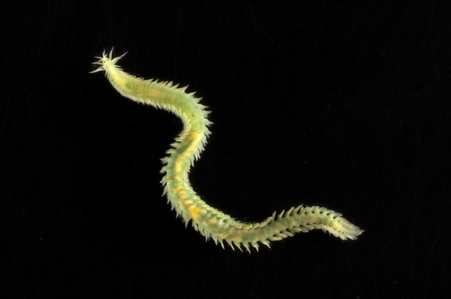General Description
In members of this genus the prostomium is distinctly heart-shaped and the pharynx has two distinct regions characterised by differing arrangements of papillae. A median antenna is absent. Body up to about 5-10 cm long.
Biology
These predatory worms can frequently be seen at low tide on sand flats where they roam around seeking mucus trails of various prey species which they then follow and capture. They have also been collected in a variety of other habitats.
Habitat
Port Phillip Bay and other similar coastal habitat, inshore and continental shelf.
Soft substrates
Seagrass meadows
Reefs
Coastal shores
Distribution guide
Southern Australia.
Species Group
Depth
Shore (0-1 m)
Shallow (1-30 m)
Max Size
10 cm
Diet
Carnivore
Commercial Species
No
Global Dispersal
Native to Australia
Species Code
MoV 4298
Identify
Conservation Status
- DSE Advisory List : Not listed
- EPBC Act 1999 : Not listed
- IUCN Red List : Not listed




